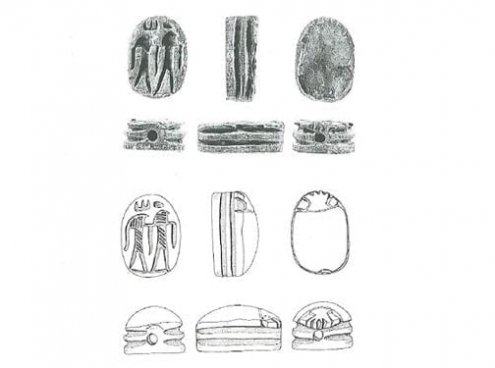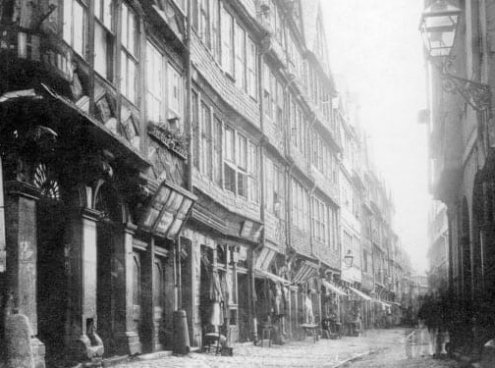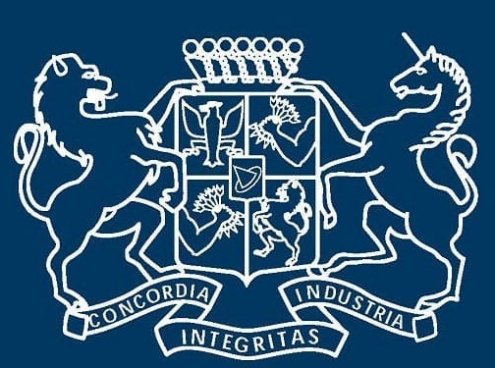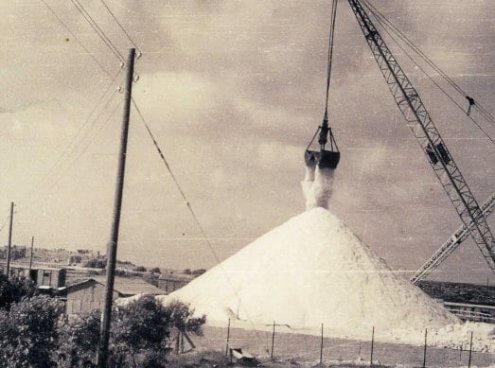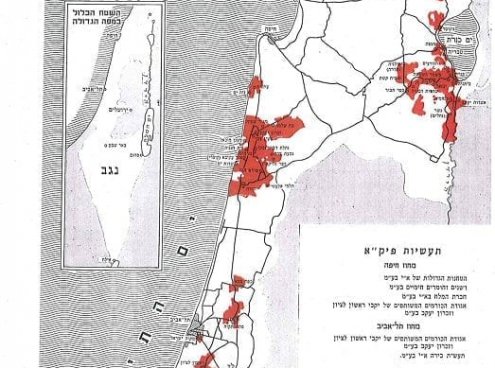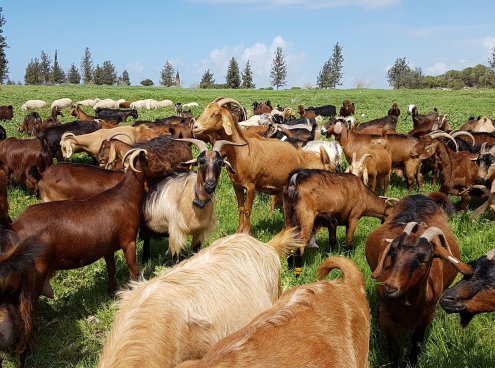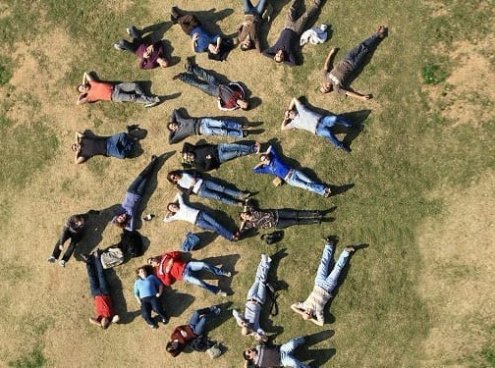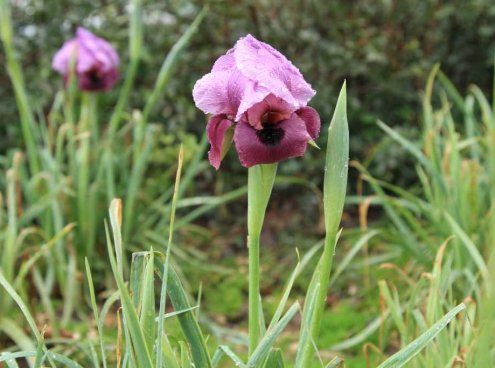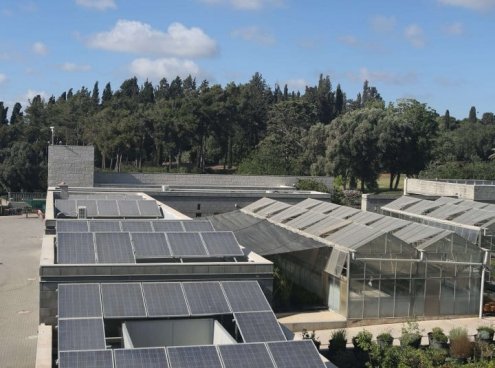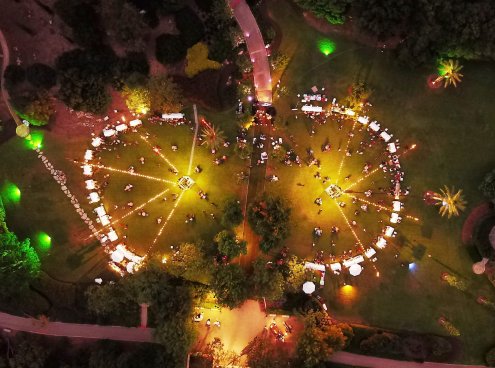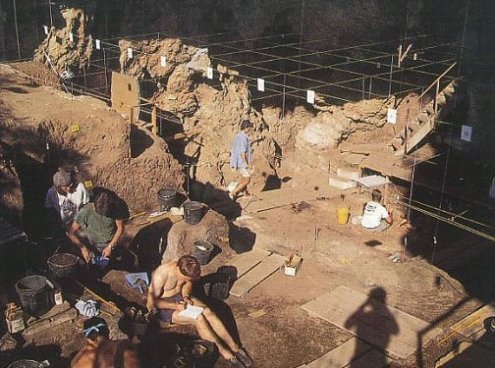 Mousterian Culture – Kebara Cave in Ramat Hanadiv’s Nature Park
Mousterian Culture – Kebara Cave in Ramat Hanadiv’s Nature Park

Mousterian Culture – Kebara Cave in Ramat Hanadiv’s Nature Park | -70000
Kebara Cave, located in Ramat Hanadiv’s Nature Park, contains evidence of human existence during the period 70,000–45,000 BCE from the late Mousterian culture. This culture is also known from Tabun Cave on Mt. Carmel and Amud Cave, as well as from a few other unroofed caves, most of which are located in the Negev Highlands and the Golan Heights.
For further information >>
The Chalcolithic Period – Horvat Eleq at Ramat Hanadiv | -4500
In excavations conducted in Horvat Eleq at Ramat Hanadiv, no remains of buildings from this period were found; the main discoveries included a flint hatchet (in the attached photo), used by the site’s residents as a tool for agricultural activities, and a shard of a butter churn, used to produce dairy products
For further information >>
The Early Bronze Age – the Tumulus Field | -3600
Rafi Greenberg
The tumulus field at Ramat Hanadiv is dated to the Early Bronze Age, 3600–2000 BCE, and is located on the stony southern slope above Hotem River. Its western end touches the cliff of Mt. Carmel and it provides a spectacular view towards the coastal plain and Hanadiv Valley.
For further information >>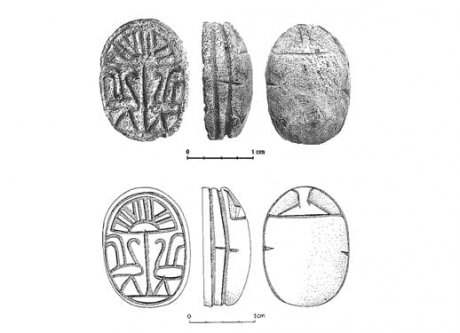
Horvat Eleq – the Middle Bronze Age | -2000
Clay fragments from the Bronze Age were found in Horvat Eleq at Ramat Hanadiv. The Bronze Age is divided into four sub-periods: the Early Bronze, the Intermediate Bronze , the Middle Bronze and the Late Bronze. During this period, humans used bronze, an alloy of copper and tin. Bronze is stronger than copper, allowing production of more effective tools and weapons
For further information >>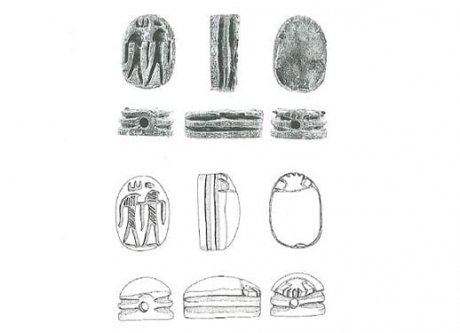
Horvat Eleq – the Iron Age | -1200
Findings from the Iron Age were found in excavations conducted in Horvat Eleq at Ramat Hanadiv. This period is divided into the First Iron Age, from 1150-1200 BCE to 1000 BCE, and the Second Iron Age, from 1000 BCE to 586 BCE. The beginning of this period is highlighted by the demise of the great powers from the Late Bronze Age – the Egyptian, the Hittite, and the Myceanean – and ends with the ris
For further information >>
The Persian Period | -586
Evidence of settlement during the Persian Period in the Ramat Hanadiv region was found in Horvat ‘Aqav and Horvat Eleq. The excavations in Horvat ‘Aqav revealed clay utensils and a metal fibula (decorative pin), dated to the Persian Period, and a number of figurine shards including two shards of a “horse and rider” figurine.
For further information >>
Horvat Eleq – the Hellenistic Period | -332
The excavations in Horvat Eleq at Ramat Hanadiv revealed a site surrounded by a wall with square towers at its four corners and additional towers in the centres of the northern, eastern and western walls. The site, which had a central tower in its upper section, was built in a commanding position above Ein Zur spring, and its area to the wall boundaries is 5,000 m2.
For further information >>
Horvat ‘Aqav and Horval Eleq – the Roman Period | -37
Excavations in Horvat ‘Aqav at Ramat Hanadiv revealed the remains of a building with living quarters and industrial facilities dated to the Herodian Period. The excavations revealed rings, many clay utensils, oil lamps, and an additional finding indicating that the site served as an agricultural farm. A terraced, whitewashed structure was identified as a ritual bath.
For further information >>
Horvat ‘Aqav – the Byzantine Period | 324
The excavations in Horvat ‘Aqav revealed a farm house, with an open courtyard at its centre; in its south-east sector are corrals and storehouses, and on the north-west side are residential quarters and a wine press. The findings include rings, shards of clay utensils, glass, metal and stone. The farm is dated to the 5th and 6th centuries CE, and its abandonment is dated to the mid-7th century.
For further information >>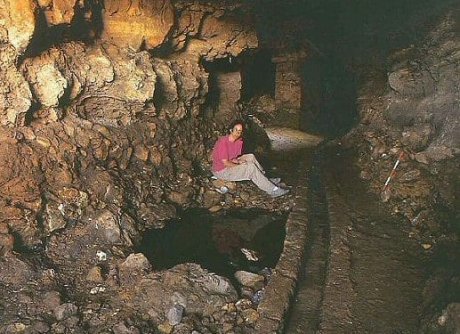
Ein Zur Spring – the Byzantine Period | 333
A hoard of 2,100 coins from the Byzantine Period was found in the Ein Zur Spring. It appears that the coins were thrown into the spring as part of an ancient custom that ascribes healing abilities to its water. We also have a description of a journey from Bordeaux, in southern France, to the Holy Land and Jerusalem, and the return to Bordeaux. The name of the traveller is unknown to us.
For further information >>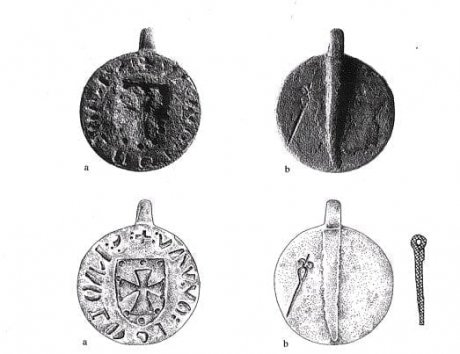
Horvat ‘Aqav and Horvat Eleq – the Crusader Period | 1099
The excavations in Horvat ‘Aqav revealed remains of a temporary Mamluk settlement that was built on the ruins of the farm from the Byzantine Period. A clay utensil found in the excavation was dated to the 13th – 16th centuries CE; findings were also found from the Umayyad, Abbasid and Fatimid Sultanates, dated to an earlier period, perhaps evidence of an ancient Arab settlement on this site
For further information >>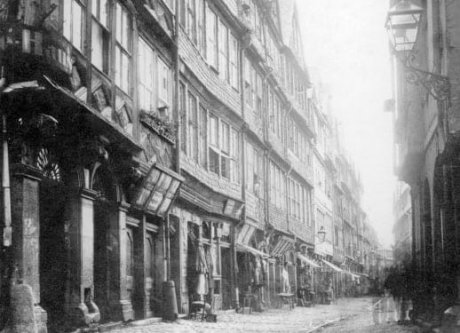
Mayer Amshel – Founder Of the Rothschild Dynasty | 1744
The Rothschild family is known for its major contribution to the economic, political and cultural history of many nations around the world. In Israel, the Rothschild name is most closely linked to the 'Well-known Benefactor', Baron Edmond de Rothschild, for his incomparable involvement and support in developing the renewed Jewish settlement
For further information >>
Baron Edmond De Rothschild | 1845
Baron Edmond Binyamin de Rothschild (1845-1934) played a significant role in shaping the fate of the Jewish people and the history of the Yishuv (the pre-State Jewish settlement in Eretz Israel). He was the third son of James (Ya'akov) and Betty (Batya) Rothschild, who headed the Paris branch of the family.
For further information >>
The Start of the Rothschilds’ Assistance to the Yishuv | 1854
Does it get passed on through gardens or through education? Yes to both. The Rothschild family's generosity was passed on from generation to generation. As early as 1854, when Baron Edmond de Rothschild was a child of 9, his father James (Ya'akov) began providing aid to the Jewish settlement enterprise in Palestine.
For further information >>
The Start of the Baron’s Activities in Eretz Israel | 1882
At the end of 1882, Baron Edmond de Rothschild met in Paris Rabbi Shmuel Mohliver, among the first members of the Hibbat Zion movement. Together with Yechiel Brill, the editor/publisher of the Hebrew newspaper Halevanon, Mohliver had developed a plan to set up an agricultural colony in Eretz Israel.
For further information >>
The Baron In Eretz Israel | 1887
The Baron's first visit to Eretz Israel took place five years after he became engaged in the settlement enterprise. He arrived anonymously on 2 April 1887, sailing with his wife from France to Alexandria, Egypt, where they left their private yacht and boarded the Austrian ship The Lloyd, arriving in Jaffa like ordinary passengers.
For further information >>
The Glass Factory | 1892
Following the establishment of the wineries, the Baron decided to build a factory to manufacture glass bottles. He left the supervision of the work and its administration in the hands of a chemist, Dr. Meir Dizengoff, and sent him to France and England for training in the glass industry.
For further information >>
1913‑1946 Early Jewish Settlement at Ramat Hanadiv | 1913
One who hikes the trails of Ramat Hanadiv would find it very difficult to imagine how the region looked about 100 years ago, at the end of the Ottoman Empire. The landscape and physical conditions were completely different in those days. One could see rocky areas with a few cultivated fields, isolated trees, a few small, poor Arab villages on the edges of the ridge, two farmhouses housing
For further information >>
The Salt factoty in Atlit | 1921
The Salt Company in the Yishuv was founded in 1921, part of a cooperative arrangement between the Baron and the Israel Lands Association regarding the state land that was leased to PICA. The establishment of the factory was meant to achieve two goals: first, to manufacture salt, a critical product for the residents of the land
For further information >>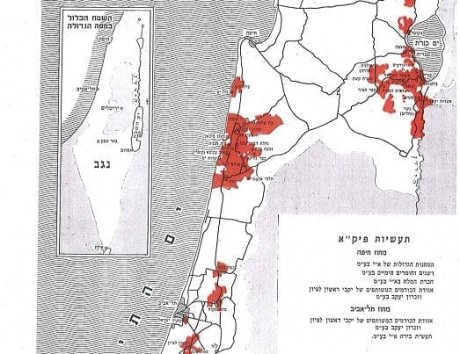
Establishment of Pica and draining of the Kabara Swamps | 1924
When the British Mandate was installed in Eretz Israel, the Baron understood that there was a reason for concern regarding not only the establishment of new settlements but also general development of the Yishuv. Thus in 1924 the Baron created PICA and appointed as its first president his son James de Rothschild, who had already proven his skills and his love of Israel.
For further information >>
The Passing of the Baron | 1934
Privileged to live a long life, Baron Edmond de Rothschild died on 2 November 1934 at the age of 89. Until his last days he was engaged in every aspect of life in Eretz Israel, in the Jewish Yishuv, and in 'his' colonies. On Saturday, 3 November 1934, word of his death spread throughout the land, and mourning descended upon its settlements, colonies and towns.
For further information >>
Opening of Ramat Hanadiv’s e Gardens | 1954
On 6 April 1954, some twenty years after they died, the remains of Baron and Baroness de Rothschild were brought to Israel aboard an Israeli naval vessel. Their coffins were reinterred in a state ceremony at Ramat Hanadiv.
The choice of Ramat Hanadiv as their final resting place was based on an event during one of the Rothschilds' visits

Establishment of Yad Hanadiv | 1958
Yad Hanadiv is the foundation charged with continuing the Rothschild family's philanthropic tradition in Israel. Created in 1958, it seeks innovative opportunities to address the needs of Israeli society. It carries forward the legacy of support for Jewish revival in Palestine begun by Baron Edmond de Rothschild in the second half of the 19th century.
For further information >>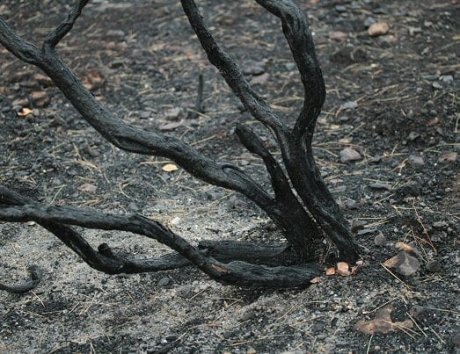
A Great Fire at Ramat Hanadiv | 1980
In May 1980 a fire broke out near the chicken coops of Kibbutz Ma’ayan Tzvi, north of the Nature Park at Ramat Hanadiv. The fire spread rapidly and destroyed significant areas of the current park.
For further information >>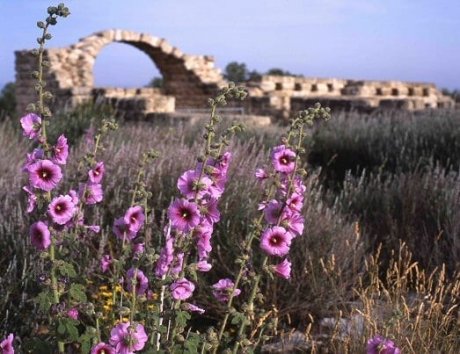
Commencement of Archaeological Excavations at Ramat Hanadiv | 1984
Ramat Hanadiv is defined geographically as a landscape unit in the southern part of Mount Carmel, characterised by a gently sloping plateau to the east and a steep cliff to the west. Its location at the meeting point between the northern coastal plan and the valley, near an important intersection in the country’s north
For further information >>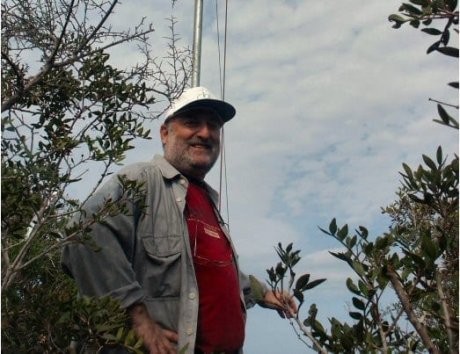
Early Research at Ramat Hanadiv | 1985
The Nature Park at Ramat Hanadiv ‘came to life’ in the mid-1980s, when it was decided to designate it as a park area dedicated to the public for a range of uses.
For further information >>
Reintroducing Birds of Prey to Nature | 1990
In the summer of 1990, Ramat Hanadiv joined the national rehabilitation efforts for selected birds of prey, conducting breeding projects, reintroductions and reinforcement of populations of rare birds of prey. Many birds of prey in Israel have been severely harmed throughout Israel’s existence
For further information >>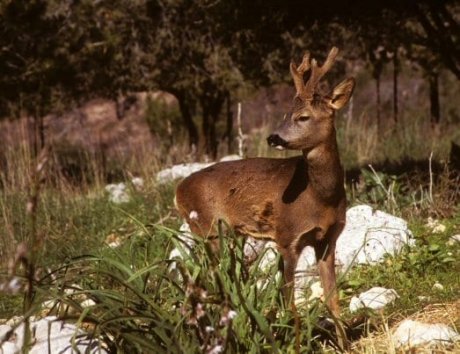
Reintroducing the Roe Deer to Nature | 1997
As part of the efforts to reintroduce animals to nature, on 10 March 1997, seven roe deer from the Hai-Bar Carmel breeding nucleus were released at Ramat Hanadiv. This reintroduction was accompanied by radio telemetry to characterise their movements and monitor their survival.
For further information >>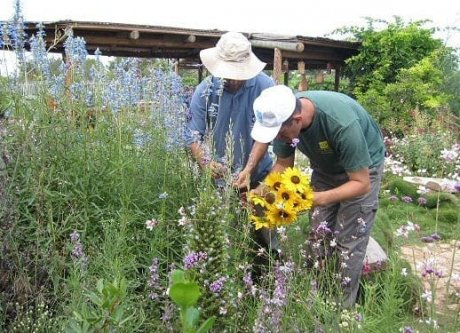
Horticultural Therapy at Ramat Hanadiv | 2000
As part of Ramat Hanadiv’s efforts to extend its activities into the surrounding communities, a unique plot of land at Ramat Hanadiv was dedicated to the horticultural therapy project in 2000. This plot of land is designated to provide therapeutic solutions for a range of population sectors and is managed by professional therapists and horticulturists.
For further information >>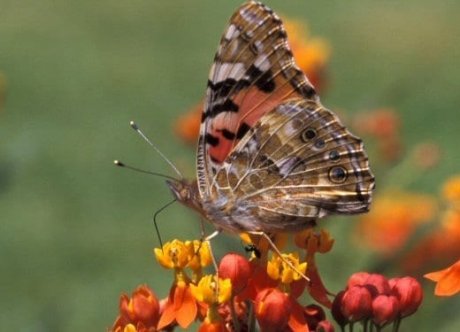
Butterflies for Research | 2002
In 2002, a study on butterflies was launched at Ramat Hanadiv. Initially, the study aimed to use butterflies to learn about the ecosystem in the Nature Park and estimate the effects of humans on the park.
For further information >>
Establishment of the Goat Pen | 2002
As part of a management approach that applies an ecological worldview and uses advanced management tools, we decided to examine goat grazing as a tool to reduce shrub density in the park in order to facilitate fire prevention and increase habitat diversity in the park
For further information >>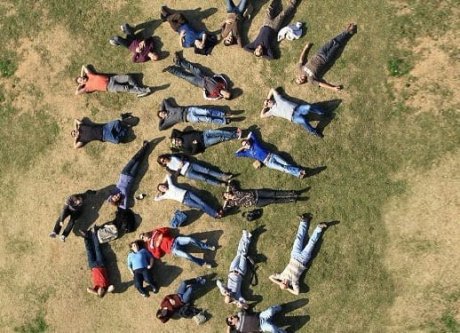
Master Plan | 2007
In 2007, a master plan for Ramat Hanadiv was initiated. For the first time since its establishment, a vision as well as aims and ideas were formulated to guide on-site operations.
For further information >>
The first green building in Israel | 2008
The Visitors Pavilion, which was dedicated in 2008, was the first building in Israel to receive ‘green building’ accreditation from the Standards Institution of Israel and the American organization, LEED.
The system-level approach to planning, constructing and operating the building aims to create a healthy, comfortable environment inside the building while taking steps to avoid impacting the

The Footprint Garden | 2009
Near the Visitors Pavilion, a garden was set up in the shape of a footprint and planted with butterfly-attracting vegetation.
This garden symbolises our participation in the worldwide concern about the earth’s dwindling natural resources due to human exploitation.

Establishment of the Iris Garden | 2010
The Iris Garden at Ramat Hanadiv contains the largest collection in the world of Oncocyclus irises; it allows the general public to become familiar with this unique group of plants and with the efforts invested in its conservation.
For further information >>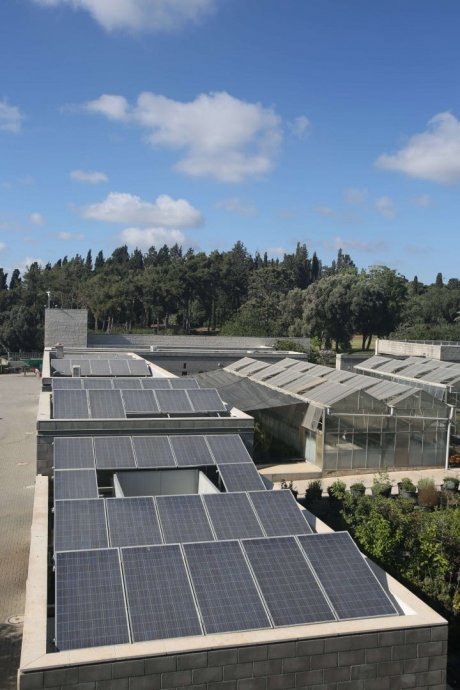
Solar Energy at Ramat Hanadiv | 2010
The importance of solar energy lies in it being a renewable energy source produced continually by the sun’s rays. In sun-drenched countries, such as Israel, this energy is an infinite resource Moreover, the process of exploiting solar energy for production of electricity is considered to be clean and environmentally friendly
For further information >>
Establishment of a Community Division | 2012
Over the years Ramat Hanadiv has run diverse collaborations with the nearby communities, focusing on both community and management. With time, the understanding that more needs to be done to strengthen the interactions with the nearby communities, for the wellbeing and benefit of both sides, has increased.
For further information >>
“Establishment of the Regional Wine Festival – “Wine & Plenty | 2014
In 2014, the first wine festival was held at Ramat Hanadiv and since then it has become a regional tradition. The festival is held in the heart of the Memorial Gardens in which Baron Rothschild is buried and connects the regional texture with the heritage of Baron Rothschild
For further information >>
The First Ever Solar Tree in Israel | 2014
In 2014, the first ever solar tree in Israel was unveiled in the Footprint Garden at Ramat Hanadiv!
The ‘tree’ is 3.5 m high and has a ‘canopy’ of solar panels that produces energy from the sun, 24 hours a day, 7 days a week! Besides being a landscape element that provides shade, it also cools the water in the water fountain.

The Sabbatical Year at Ramat Hanadiv | 2014
During the Hebrew year, 5775 (2014 – 2015), Ramat Hanadiv marked the Jewish Sabbatical (Shmittah) year for the first time, through its operations.
For further information >>
Establishment of the Partnership for Regional Sustainability | 2015
In 2015, Ramat Hanadiv established the Partnership for Regional Sustainability, aiming to combine forces for the quality of life in the region. Five neighbouring councils – Binyamina Givat-Ada Local Council, Zikhron Ya’akov, Hof Hacarmel Regional Council, Jisr A-Zarqa and Alona Regional Council – joined Ramat Hanadiv in order to work together on the challenges of preserving the unique texture
For further information >>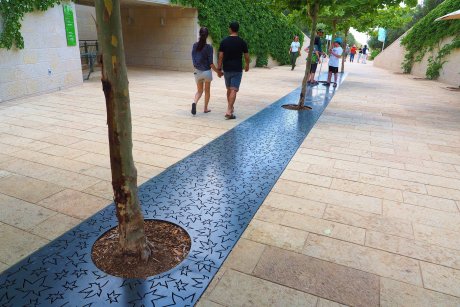
Let the Trees Breathe Through Their Roots | 2016
A dozen plane trees were planted at the main entrance to the Gardens and in the courtyards of the building to provide shade. The Oriental plane is a fast-growing deciduous tree that grows up to 25 m tall and is long-lived. Most of the trees indeed grew rapidly to great heights; however, surprisingly, the four trees that were planted along the walkway that links that main entrance to the Gardens
For further information >>
Around Ramat Hanadiv – Cycle Trails | 2017
In October 2017, two cycle trails were opened to the public at Ramat Hanadiv.
As part of the sustainability approach, we collaborated with the regional cycling community already in the planning stages; we worked together to identify the community’s needs and to develop the cyclists’ awareness of conserving nature and landscape values while cycling.

Landscaping Design Course | 2018
Accelerated development and reduction of open landscapes in Israel pose challenges for landscape architects.
Ramat Hanadiv ran a course on landscape design with a focus on vegetation that offered broad, in-depth study of vegetation design and planning, focusing on sustainability, functionality, and aesthetics, by providing practical tools alongside inspirational meetings ...

Establishing an Educational Community | 2019
Since 2019, the Education Division at Ramat Hanadiv has run an educational community forum to promote learning in nature. The community meets once a month, on average, during the school year, where each meeting takes place in a different location and includes workshops that provide practical tools for learning in nature as well as familiarity with different educational spaces that foster learning
For further information >>
2020 – The Year of COVID‑19 | 2020
When the world “stopped moving” for a while
During 2020 the world was hit by the COVID-19 virus; for the first time, the gates of Ramat Hanadiv remained closed to vehicles for an entire month (March 2020).
Nevertheless, during the lockdown Ramat Hanadiv continued to be a refuge for nearby residents who were permitted, according to the restrictions, to enjoy nature and the beautiful, tranquil land
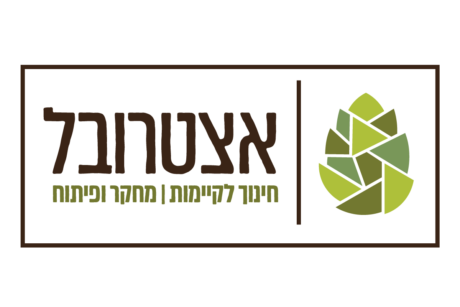
Establishing an R&D for Sustainability Education | 2022
During the summer of 2022, Ramat Hanadiv established the Pinecone Centre, an R&D centre for sustainability education.
The centre runs innovative, experimental education programmes on the main educational issues at Ramat Hanadiv – reducing the ecological footprint, field investigations, and out-of-class learning. Alongside its development and implementation, each programme is accompanied by a profe
Any question? We will be glad to help
Of further interest...
Accessibility
Tour Options for People with Special Needs
Accompanied by one of our guides, you will be able to have a custom-made visit tailored to your group
Sustainability
Sustainable Gardening
Sustainable gardening is defined as gardening that considers the needs of the current generation without harming the needs of future generations. It includes garden design that considers the existing elements on site – the landscape, soil, environment and vegetation suitable for the region
Dining Here
Dining
To complete your Ramat Hanadiv experience, you are cordially invited to enjoy the culinary pleasures of Mata’im, the cafe-restaurant on our premises.




